Chinese Lanterns: The Inheritance and Innovation of a Thousand-Year Art of Light and Shadow
- ForestPainting
Every lantern is a poem of light, and every beam of light is a legacy of culture. From imperial celebrations to folk festivals, Chinese lanterns use brilliant colors and exquisite craftsmanship to tell the story of the splendor and heritage of Chinese civilization.
Chinese Lanterns, also known as flower lanterns (花灯), are an indispensable part of traditional Chinese culture. With a history that goes back thousands of years, lanterns are a unique symbol of Chinese civilization. They carry people’s aspirations for a better life and their blessings, and they represent a pinnacle of traditional Chinese craftsmanship and aesthetics.
From folk festival decorations to envoys of international cultural exchange, Chinese lanterns have undergone a long period of development, continuously integrating new technologies and concepts to find the perfect balance between tradition and modernity.
The Chinese Lanterns History and Development
The history of the Chinese lantern can be traced back to the Qin and Han dynasties, when lanterns were mainly used for lighting and religious ceremonies. By the Tang and Song dynasties, lanterns had gradually become an important element of festival entertainment. The custom of lighting lanterns during the New Year in the Zigong area was already established during the Tang and Song dynasties.
During the Ming and Qing dynasties, lantern art reached its peak, with distinct regional styles emerging. In 1919, Peng Qian, the fourth-generation inheritor of the “Peng Family Lanterns” (彭氏灯彩), moved from Licheng County in Shandong to Lanxi County, bringing the craft to the Northeast region. From 1970, the fifth-generation inheritor, Peng Huiqing, began holding small-scale Lantern Festival events at the Peng family compound.
In 1989, the Zigong Lantern Festival was exhibited abroad for the first time in Singapore, starting a series of international exhibitions. In the last 30 years, the Zigong Lantern Festival has traveled to five continents and across China, attracting more than 400 million visitors from both China and abroad.


The Color Philosophy and Patterns of China Lanterns
The use of color in Chinese lanterns is not just for aesthetic purposes; it also contains deep cultural and philosophical meanings. The most representative traditional Chinese colors, including red, yellow, blue, and green, are widely used in Chinese lanterns.
1. The Cultural Meaning of Colors
Red: This is the most representative color in traditional Chinese culture, symbolizing auspiciousness and joy, and Chinese red lanterns are widely used for all kinds of celebrations. Using large areas of red on lanterns better reflects this sense of luck and festivity.
Yellow: This color holds a revered status in traditional colors, Yellow lanterns were traditionally used in ancient imperial palaces (such as the Forbidden City), temples, and mausoleums, symbolizing nobility and good fortune. In ancient times, especially, emperors’ clothing was yellow, and others were strictly forbidden from wearing it.
Blue and Green: These colors symbolize the vibrant spring and also represent plants, symbolizing prosperity and vitality. These colors are often used to reflect ethnic and regional characteristics in designs, making them more easily accepted by the public.
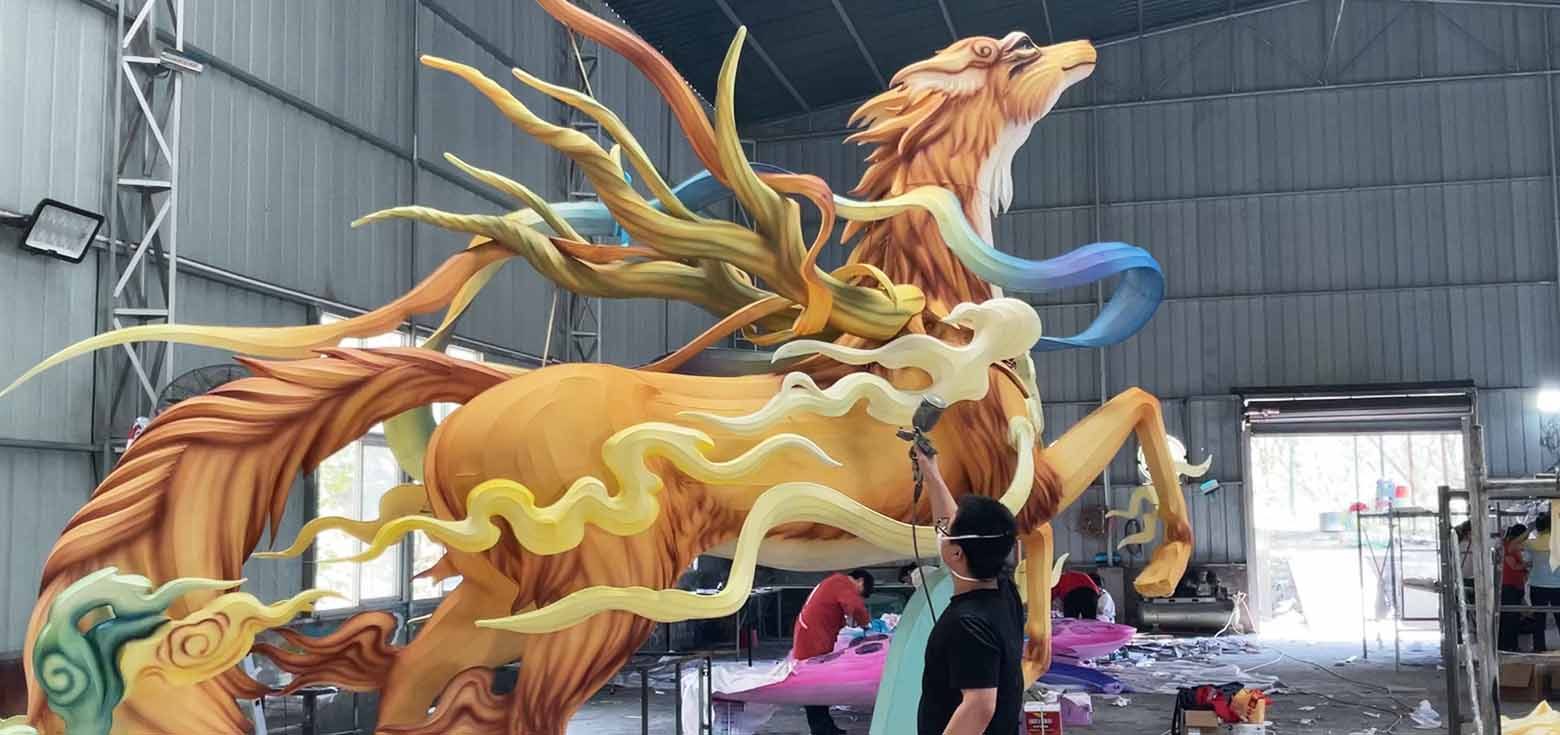
2. The Symbolic Meaning of Patterns and Designs
The patterns and designs on Chinese lanterns not only reflect people’s aesthetic tastes and customs but also their unique religious beliefs and totem worship.
Here is a comparison table of common lantern patterns and their meanings:
Pattern Type | Specific Designs | Symbolic Meaning | Common Application |
Plant Patterns | Lotus,peony,intertwined vines | Purity,wealth,continuous blessings | Palace lanterns, lotus lanterns |
Animal Patterns | Dragon, phoenix, fish, qilin | Power,good fortune, abundance, auspiciousness | Landscape lanterns, festival lanterns |
Geometric Patterns | “Wan” symbol (swastika), ruyi (scepter) symbol, Taiji symbol | Good fortune, bringing in blessings and warding off evil, yin and yang harmony | Lantern frame decorations, lantern surface divisions |
Figurative Patterns | The Eight Immortals, historical figures, mythical characters | Moral education, historical legacy, praying for blessings | Themed lantern groups, story lanterns |
The patterns commonly used in Foshan lanterns are mostly lotus patterns, ruyi patterns, cloud-head patterns, Taiji patterns, “wan” symbol patterns, geometric patterns, scale patterns, swirling dot patterns, honeysuckle patterns, Tang grass patterns, entwined vine patterns, and treasure patterns, which all symbolize good fortune, bringing in blessings and warding off evil, and seeking good luck while avoiding disaster.
The most frequently used of these are the plant patterns, which are elegant and delicate. The patterns can be made from rush or from light-transmitting cutout paper with a glittering copper foil lining, where the flashing gold of the copper foil adds to the lantern’s brightness and splendor.
Types and Systems of Chinese Lanterns
1. Classified by Structure
Palace Lanterns (宫灯): One of the most representative types of traditional Chinese lanterns. Their frames are often made from valuable woods like redwood or rosewood and covered with silk, glass, or marble. They are typically hexagonal or octagonal, giving them an elegant and magnificent appearance.
Revolving Lanterns (走马灯): A special kind of lantern that uses the principle of rising hot air to drive a revolving inner screen. The cutout paper figures inside create a dynamic, interesting effect as they spin.

Handheld Lanterns(提灯):A handheld lantern is a type of lantern with a handle that can be carried or hung, making it the most common and practical form of lantern. A framework, typically made from bamboo strips or metal wire, is covered with colorful paper or silk fabric and holds a candle or an electric light inside. Handheld lanterns come in a variety of shapes, such as round, oval, square, and even a melon-ribbed shape. They are commonly used in festive parades, for daily lighting, and as decoration, making them the most popular form of lantern among the public.
sky lanterns(天灯):The Sky Lantern, also known as a Kongming Lantern, is an ancient hot-air balloon-style lantern. Made of paper pasted into a lantern shape, a lit candle at the bottom heats the air, causing the lantern to rise into the sky.
Legend says it was invented by Zhuge Liang during the Three Kingdoms period and was originally used for military communication. It later gradually evolved into a symbol for praying for blessings and making wishes. Today, they are often released during celebratory events to carry people’s hopes and good wishes.
Floor Lanterns (座灯): Large lanterns placed on the ground, often featuring mythical stories, historical figures, or auspicious animals. They are complex in design and grand in scale.
Hanging Lanterns (吊灯): Lanterns suspended indoors or outdoors, with diverse forms ranging from simple spherical red lanterns to complex, multi-layered combined lights.
Water Lanterns (水灯): Lanterns placed on the surface of the water. The bottom is waterproofed, and the light reflects on the water, creating a beautiful interplay of illusion and reality.
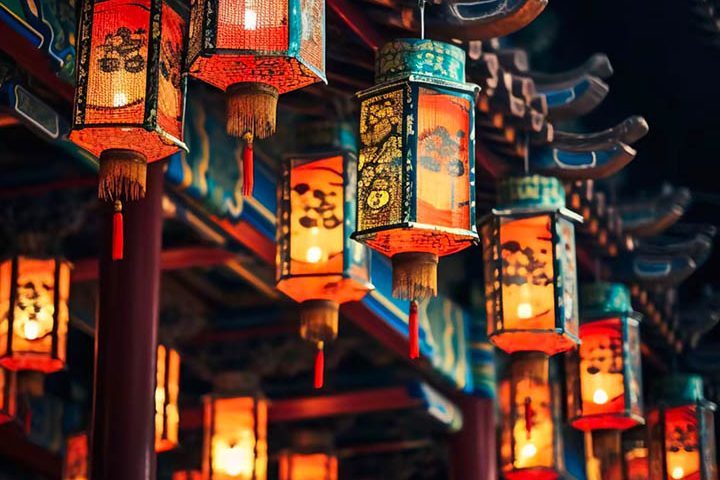

2. Classified by Theme
Animal Lanterns (动物灯): Lanterns shaped like auspicious animals such as dragons, phoenixes, fish, and qilin, symbolizing good fortune. For example, a fish lantern symbolizes “surplus year after year” (年年有余), and a tortoise lantern symbolizes longevity.In addition, various insects found in nature can also be crafted into insect lanterns, which hold significant educational and scientific value in modern society.
Plant Lanterns (植物灯): Lanterns shaped like plants such as lotuses, peonies, and peaches. A lotus lantern symbolizes purity, and a peony lantern represents wealth.
Figurative Lanterns (人物灯): Lanterns shaped like historical figures or mythical characters, such as the SunWuKong lanterns or NeZha lanterns.
Architectural Lanterns (建筑灯): Lanterns shaped like traditional Chinese buildings such as pavilions, towers, and bridges, showcasing the beauty of traditional Chinese architecture.
Utensil Lanterns (器物灯): Lanterns shaped like everyday objects such as vases, drums, and fans, reflecting daily life.
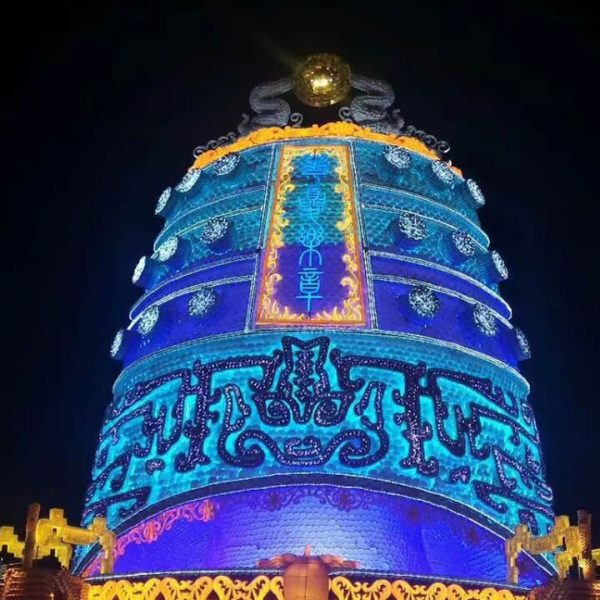

Thematic Styles of China Lanterns
The themes of Chinese lanterns are heavily influenced by traditional culture, containing rich cultural symbolism and auspicious meanings.
1. Auspicious Themes
Fortune, Prosperity, Longevity, and Joy (福禄寿喜): This is the most common theme for Chinese lanterns, using images like bats (福, fú, fortune), deer (禄, lù, prosperity), peaches (寿, shòu, longevity), and magpies (喜, xǐ, joy) to express a longing for a beautiful life.
Peace in All Four Seasons (四季平安): Uses seasonal flowers and vases as the main elements to symbolize peace throughout the year and spring-like weather.
Bountiful Harvest (五谷丰登): Uses crops and harvest scenes to express a wish for a good agricultural harvest.

2. Literary and Historical Themes
Classic Literary Works: Characters and scenes from classic works like Journey to the West, Dream of the Red Chamber, and Romance of the Three Kingdoms are often used as themes for lanterns.
Historical Stories: Educational historical stories such as “Yue Fei’s mother tattooing his back” and “Kong Rong giving up the pears” are also often made into series of lanterns.
Ancient Mythological Systems:Mythological stories and creatures from the Classic of Mountains and Seas are also a common theme at major lantern festivals, with examples including “Nuwa mending the sky”, the nine-tailed fox, and the Kunpeng.
Poetic Imagery: The mood and imagery of famous poems like “Before my bed, the moonlight” and “The spring breeze has turned the southern bank of the Yangtze green again” are expressed through lantern art.

3. Religious and Mythological Themes
Buddhist Themes: Buddhist elements such as lotus flowers, Buddha statues, and flying celestial beings are common in lantern creation. The structure of the Wang family’s large lanterns, for example, often imitates pagodas, resembling a paper-crafted pavilion-style pagoda, with the number of tiers almost always being an odd number, typically seven or nine, which also takes on the “revering the odd” meaning of pagodas.
Taoist Themes: Taoist stories such as the Eight Immortals crossing the sea, the Grand Supreme Elderly Lord, and the Peach Banquet are also important themes for lanterns.
Folk Beliefs: Deities from folk beliefs, such as Mazu, Guan Gong, and the Kitchen God, also frequently appear in lanterns.
Major Schools and Regional Characteristics of Chinese Lantern
1. Zigong Lanterns and the China Lantern Museum
Zigong lanterns have a long history and a unique style, known for their grand scale and exquisite craftsmanship. According to historical records, the custom of lighting lanterns for the New Year and decorating with lanterns around the Lantern Festival had already gradually formed in the Zigong area during the Tang and Song dynasties. The Zigong Lantern Festival began to take shape during the Ming and Qing dynasties.
In recent years, the Zigong Lantern Festival has gained international acclaim for its unique charm, earning the titles “Southern Lantern City” (南国灯城) and “The World’s Best Lanterns” (天下第一灯).
The China Lantern Museum is located within Zigong Lantern Park in the center of the old city. It is currently the only professional, state-owned museum in China and the world dedicated to lantern culture. The museum, which sits in the scenic Zigong Lantern Park, is the only “national-level” professional museum in China that integrates lantern protection, collection, exhibition, and research.
A unique feature of Zigong Lantern Park is the museum within the park, which combines the two elements. The China Lantern Museum’s basic exhibits are divided into four main sections: the prologue hall, the history of Chinese lanterns, the cultural styles of Chinese lanterns, and the Zigong Lantern Festival. Its collection primarily consists of historical lantern artifacts, lanterns with Chinese cultural flair, and modern lantern groups made with special materials.

2. Peng Family Lanterns
The Peng Family Lanterns (彭氏灯彩) originated in 1769 during the Qing Dynasty under the Jiaqing Emperor. The founder, Peng Jinfu, opened a lantern workshop in Licheng County, Shandong province. After several generations of inheritance, the Peng Family Lantern art has become increasingly perfect, characterized by ingenious design, peaceful themes, meticulous craftsmanship, and beautiful shapes, forming a unique artistic style.
The types of Peng Family Lanterns include palace lanterns, revolving lanterns, animated lanterns, dragon boat lanterns, phoenix lanterns, peacock lanterns, longevity lanterns, lanterns symbolizing “adding flowers to the brocade,” lanterns of the God of Wealth, lanterns of characters from Journey to the West, flower and bird lanterns, insect and fish lanterns, auspicious lanterns, lanterns of lions playing with embroidered balls, lotus lanterns, snowflake lanterns, and animal lanterns, all competing in a riot of color.
3. Qinhuai Lanterns
Qinhuai Lanterns (秦淮灯彩) are a traditional handicraft from Nanjing, Jiangsu province, and a National Intangible Cultural Heritage. The production of Qinhuai lanterns is complex, requiring 62 steps including splitting, tying, pasting, cutting, and painting. The most representative of these is the lotus lantern.
To make a lotus lantern, the frame is the most critical part. The artisan needs to select 10 bamboo strips, split them into thin strips 1 to 2 millimeters thick and 3 to 5 millimeters wide, and then bend them into a semi-spherical shape. Then, they use iron wire to firmly tie the bamboo strips together, leaving one end of the wire to hold a candle. Finally, they paste on red, translucent thin paper and seal the bottom with a round piece of paper.
4. Other Regional Schools
Chaozhou Lanterns: Known for being magnificent and exquisitely delicate, they are often decorated with gold and silver foil, giving them a rich and splendid appearance.
Quanzhou Lanterns: Emphasize intricate structural design and are often multi-layered revolving lanterns with complex craftsmanship.
Beijing Palace Lanterns: Have a strong imperial style, using premium materials and meticulous craftsmanship to reflect royal grandeur.
Xiashi Lanterns: Famous for their needle-pricking technique, in which various patterns are pricked onto the surface of the lantern. The light shining through the pinholes creates a delicate picture.
Foshan Lanterns: Often use bold contrasting colors like red, yellow, and green to create strong, vibrant color contrasts. Foshan lanterns also add gold and silver to the bright red and green, giving them a touch of elegance and scholarly refinement.
The Evolution of Chinese Lantern Craftsmanship and Materials
1. Traditional Craftsmanship
Traditional lantern making craftsmanship is an entirely manual art. Artisans use materials like bamboo, wooden sticks, willow branches, and straw to meticulously craft the frames based on their designs. Then, they use paper or silk to cover the frame, giving the lanterns a beautiful outer layer. Finally, they add painted decorations, with every stroke embodying the artisans’ dedication.
The production of Qinhuai lanterns requires 62 steps, including splitting, tying, pasting, cutting, and painting. The making of the petals is particularly detailed: first, a sheet of rice paper is cut into small blocks and soaked in a dye vat to create a gradient color. After drying, about ten sheets of paper are stacked together and pressed with a mold to create a pattern. Then, one end is tied with a thin thread, and the petal shape is cut.

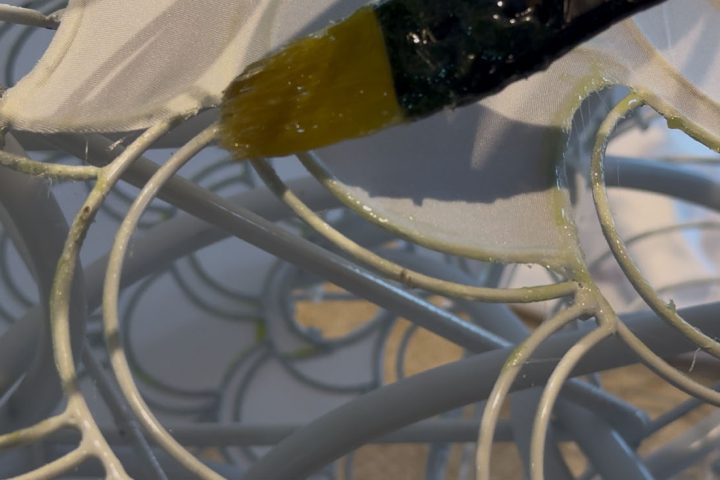
2. Evolution and Development of Materials
As times have changed, the raw materials for lantern making have evolved from traditional bamboo, wood, paper, and silk to steel wire, rebar, and satin fabric, and welding technology has been introduced. The lanterns produced with these materials are more beautiful, refined, and durable, making them easier to admire and preserve.
The traditional materials for Chinese-style lamp mainly include bamboo, paper, ceramics, wood, and blue-and-white porcelain, using techniques like manual carving. In contrast, modern Chinese-style lamp may use new materials such as metal, glass, and acrylic to create a contemporary feel.
Here is a comparison of traditional and modern lanterns in terms of materials and craftsmanship:
Feature | ||
Main Materials | Bamboo, paper, silk, wood | Steel, LED lights, satin fabric, glass |
Craftsmanship | Hand-tied frames, painting, paper-cutting | Electric welding, 3D printing, digital control |
Light Source | Candles, oil lamps | LED lights, intelligent lighting systems |
Durability | Low, easily damaged | High, weather-resistant |
Production Cost | Low, but time and labor-intensive | Higher cost, but high production efficiency |
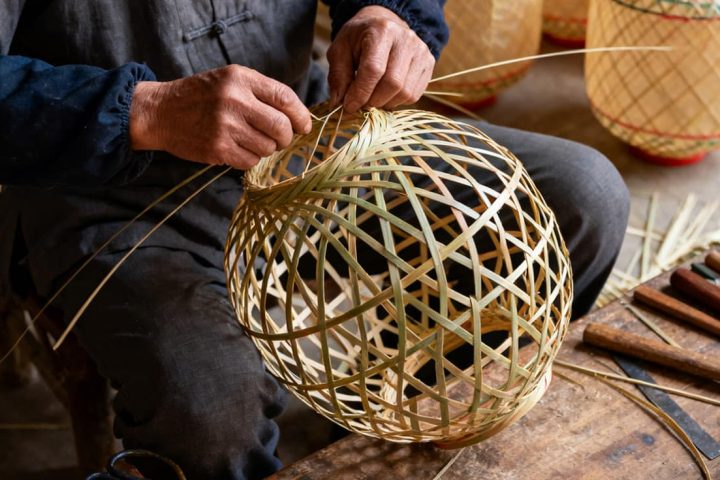

The Artistic Value and Cultural Significance of Chinese Lanterns
1. Cultural Symbolism
Lanterns hold deep symbolic meaning in traditional Chinese culture. The lantern light symbolizes hope. The popularity of admiring lanterns during traditional Chinese festivals reflects the Chinese people’s optimism about life and their hopes for the future.
Lanterns of different shapes often embody people’s beautiful wishes. For example, the Chinese dragon lantern at the Lantern Festival symbolizes favorable weather and a prosperous, peaceful country. Lanterns at the Mid-Autumn Festival symbolize family reunion. A fish-shaped lantern symbolizes “surplus year after year” (年年有余), and a lotus lantern symbolizes purity and elegance.
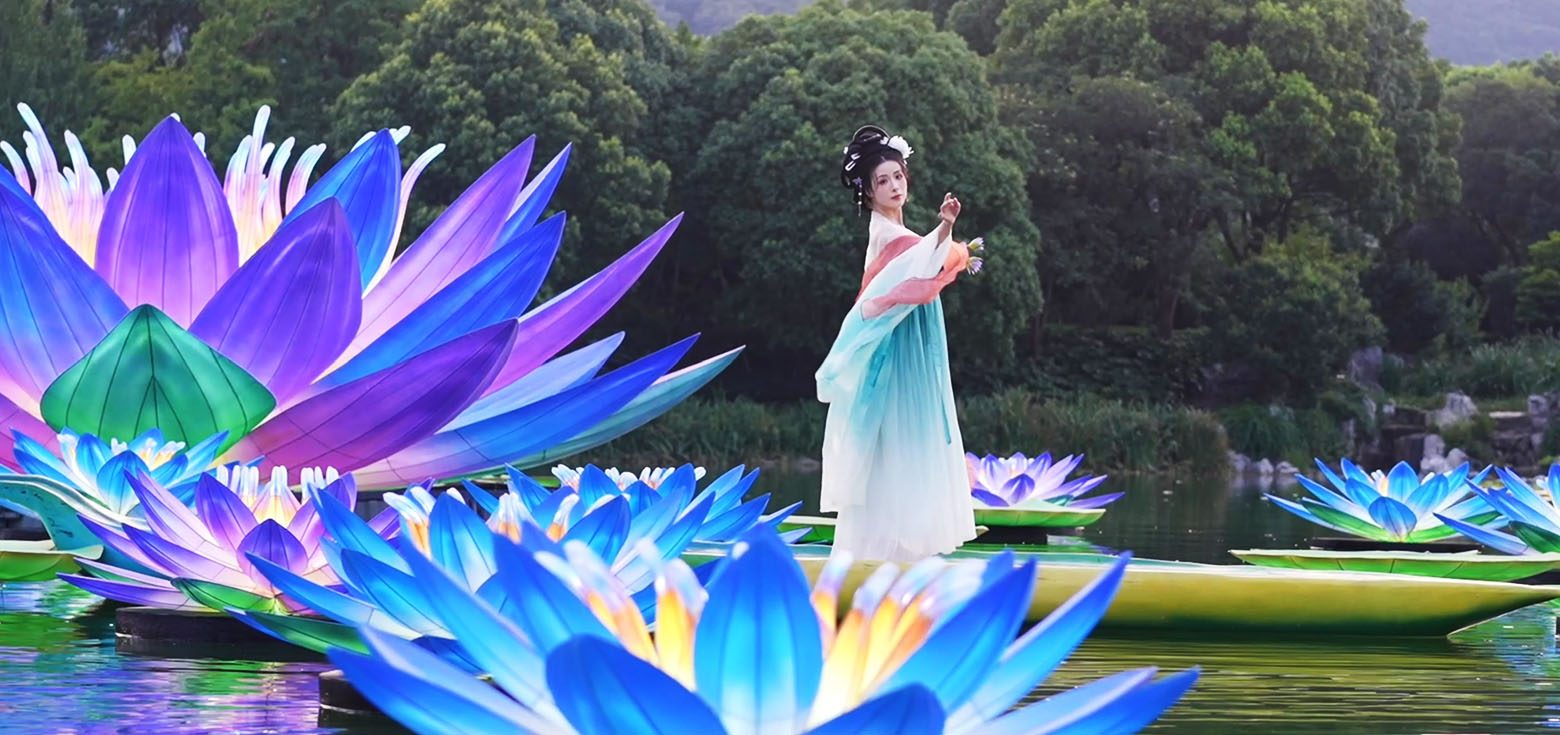
2. Artistic Value
Chinese lantern art is a composite art form that integrates various artistic styles such as painting, paper cutting, weaving, and sculpture. It combines the characteristics of two-dimensional and three-dimensional art, creating a magnificent visual feast through the interplay of light and shadow.
The artistic value of a lantern is not only reflected in its appearance but also in the cultural significance and technical skills it embodies. Every exquisite lantern is the crystallization of an artist’s dedication and wisdom, carrying a profound cultural memory.
Modern Innovation and Technological Integration of Chinese Lantern
1. Innovation in Design Concepts
Modern lanterns are constantly innovating in design, combining traditional elements with modern aesthetics.
New Chinese lamps retain Chinese cultural elements while incorporating modern, minimalist design concepts, resulting in a unique style.
Unlike traditional Chinese lamps, which focus on complex carvings and decorations, new Chinese-style lamps place more emphasis on simple lines and material texture. They often use modern materials such as metal and glass to express a more fashionable and contemporary aesthetic.
2. Innovation in Technology and Materials
Modern lantern production widely uses LED lighting technology, which is not only energy-efficient and environmentally friendly but also offers richer colors and greater controllability. The use of new materials such as steel frames and waterproof fabrics also makes lanterns more durable and suitable for outdoor exhibitions.
Zigong lanterns are innovating their forms of expression, using technologies like VR, AR, and artificial intelligence to create immersive lantern experiences. These technological innovations not only enhance the visual appeal and entertainment value of the lanterns but also open up broader applications for them.
3. Innovation in Content and Form
The themes for modern lanterns are also becoming more diverse. In addition to traditional folk stories and myths, they also incorporate elements from modern popular culture, such as cartoon characters and video game roles.
The 29th to 31st Zigong International Dinosaur Lantern Festivals collaborated with IPs like Honor of Kings, Pop Mart, and A Record of a Mortal’s Journey to Immortality, using lanterns to recreate classic scenes from games and animations to attract a younger audience. The Chinese Lantern World (中华彩灯大世界) launched a “daytime anime expo + nighttime lantern festival” model, hosting a light and anime carnival that introduced domestic anime IPs like The Legend of the Great River, paired with cosplay parades and street dance performances, attracting over 70,000 visitors.
Modern Applications of Chinese Lanterns and Year-Round Light Festivals
1. New Formats for Year-Round Lantern Events
Chinese lanterns have long broken away from the constraints of traditional holidays, evolving into year-round cultural spectacles and tourism highlights. Modern lantern events not only continue the traditions of the holiday light festival but also innovate with new formats for year-round lantern displays.
Permanent Lantern Parks: The Zigong China Lantern World, for example, is the world’s only lantern park to operate year-round, creating an “everlasting lantern festival.” The park attracts visitors all year with different themed lantern sets and event planning for each of the four seasons, breaking the seasonal limitations of traditional festivals.
Theme Park Lantern Events: Major theme parks nationwide have introduced lantern elements to create unique nighttime attractions. Examples like the Spring Festival lantern event at Shanghai Disneyland and the night light festival at Beijing Happy Valley combine traditional lanterns with modern amusement facilities to create a new entertainment experience.
2. Commercial and Cultural Applications of Lanterns
Illuminating Commercial Complexes: Large shopping centers and commercial districts use lanterns for landscape lighting to create immersive consumer experiences. The festive lantern displays at Chengdu Taikoo Li and the decorative lanterns on Shanghai’s Nanjing Road Pedestrian Street, for instance, have become key highlights of urban commerce.
Cultural and Ceremonial Events: Lanterns are used as crucial visual and atmospheric elements in various cultural festivals, art festivals, and brand launches. Events such as the light installation exhibition at Beijing Design Week and the Shenzhen Light & Shadow Art Season have heavily incorporated lantern art.
Urban Lighting Projects: Many cities are integrating lantern art into their urban nightscapes to create distinctive night tourism routes. The Pearl River night light show in Guangzhou and the West Lake nightscape project in Hangzhou, for example, both feature traditional lantern elements.
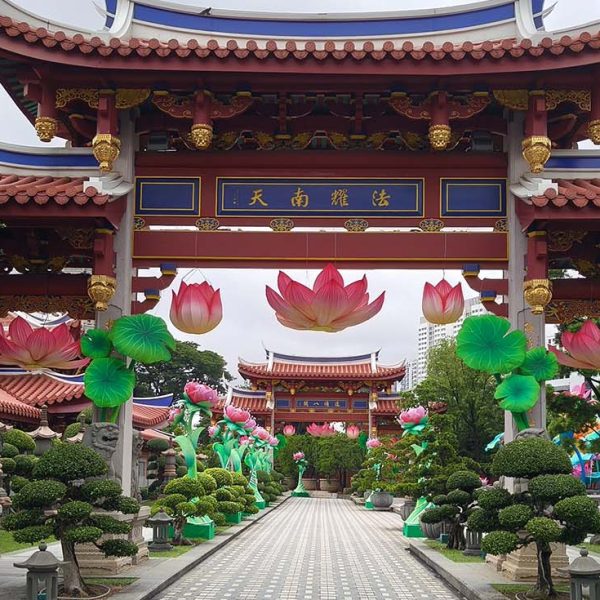
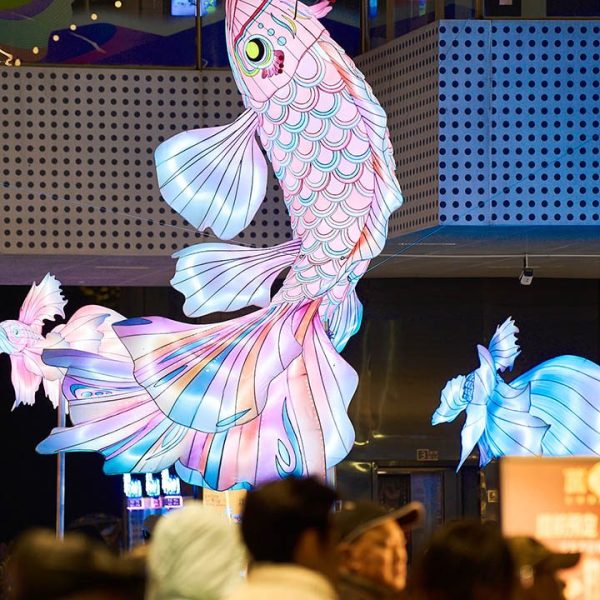
A Global Overview of Lantern Culture
While Chinese lanterns are unique, various parts of the world also have their own distinct lantern cultures and traditions.
1. Asian Lantern Traditions
Japanese Gifu Lanterns: Gifu lanterns are the most representative traditional Japanese lanterns, made from bamboo frames and Japanese paper. They have a slender, elegant shape and are often used in festivals and for storefront decoration.
Thai Loy Krathong Festival: On the night of the full moon of the 12th month of the Thai lunar calendar, Thais make beautiful floating lanterns and release them into rivers to pay homage to the water goddess and to wash away bad luck.
Korean Lantern Festival: On the Korean Lantern Festival, people make various lanterns. The “Mangwol-deung” (망월등, “moon-gazing lantern”) is particularly famous, as people climb mountains to gaze at the moon and pray for good fortune.
Indian Diwali: Diwali is an important Hindu festival where people light clay oil lamps, symbolizing the victory of light over darkness and knowledge over ignorance.
2. Lantern Culture in Western Countries
Christmas Lights: Western countries have a tradition of decorating with lights during Christmas. Households decorate their houses and Christmas trees with various colored lights to create a festive atmosphere.
Venice Carnival Lanterns: During the Venice Carnival in Italy, various exquisite masked lanterns become a common sight on the streets, filled with a sense of romance and mystery.
Mexican Day of the Dead Lanterns: Mexicans make colorful cutout paper lanterns during the Day of the Dead to guide the souls of their deceased loved ones back home.
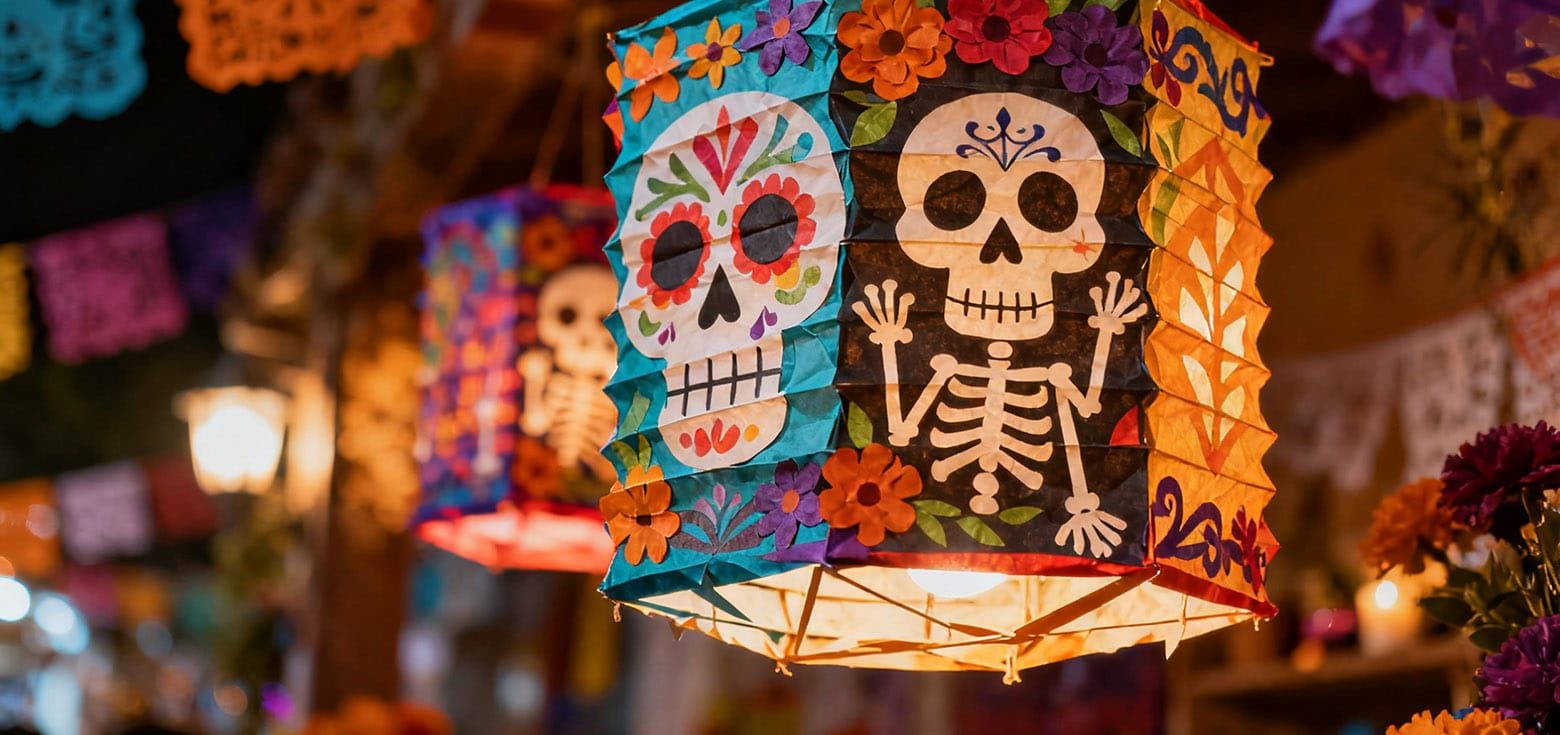
The International Influence and Cultural Diffusion of Chinese Lanterns
1. Global Influence
Chinese lanterns have become an important vehicle for spreading Chinese culture around the world. In the overseas lantern exhibition market, Zigong lanterns lead with a 92% market share, having been showcased in more than 80 countries and regions worldwide.
In 2024, Zigong lantern companies held 104 overseas exhibitions, with a cultural export value of $77.4651 million. From January to April of this year, Zigong launched 42 lantern projects in 13 countries, with a cultural export value of $15.6976 million.
To learn how Zigong lanterns have achieved this global leap, please read our article, “The Global Rise of Chinese Lantern Art“.

2. Cultural Dissemination and Integration
In their international promotion, Chinese lanterns focus on integrating with local cultures to “do as the Romans do”. In Norway, lanterns are combined with ice sculptures, creating a beautiful interplay. The “Chinese Lantern Festival” in Gaillac, France, incorporates elements of local specialty wines. This “connecting through art” approach helps overseas audiences focus more on the intricate details of the craftsmanship.
Zigong also holds a Global Children’s Lantern Creative Competition to help children from all over the world “make friends” with lantern culture. In the second competition in 2024, lantern artisans transformed outstanding entries from children in 26 countries into vivid, three-dimensional lanterns.
ForestPaintingLantern's Custom Lantern Services
As a professional provider of lantern customization and services based in “China Light City” (中国灯城) of Zigong, ForestPaintingLantern leverages its deep understanding of traditional lantern art and its mastery of modern innovative technologies to provide customers with comprehensive lantern customization solutions.

1. Our Advantages
Geographic Advantage: Our company headquarters is in Zigong, giving us access to the resource advantages of Zigong lanterns, a National Intangible Cultural Heritage. We can access the most traditional production techniques and the most outstanding lantern artisans.
Talent Advantage: Zigong has a workforce of 100,000 people who are regularly engaged in lantern production and simulated dinosaur manufacturing, with an additional 150,000 seasonal workers. We have a highly skilled and experienced production team.
Innovation Advantage: We continuously explore the integration of lantern art and modern technology, applying new technologies like VR, AR, and AI to lantern creation to enhance the artistic expression and interactive experience of our lanterns.
2. Our Business Scope
Corporate Customization: We provide brand customization services for companies and organizations, seamlessly blending corporate culture with lantern art.
Landscape Decoration: We design and produce large-scale landscape lanterns for urban plazas, parks, and tourist attractions, creating iconic nightscapes.
Cultural Events: We design and produce themed lanterns for various cultural festivals, animal and botanical gardens, and theme light shows, creating a rich festive atmosphere.
Year-Round Light Festivals:We offer one-stop planning services for year-round light festivals. This includes, but is not limited to, global holiday lantern festivals, light shows, and Chinese lantern celebrations. From design to production, transportation, and installation to post-event maintenance, we are here to help you create a spectacular lantern carnival.
International Exchange: We provide overseas clients with lantern works that have unique Chinese cultural characteristics while also incorporating elements of local culture, promoting Sino-foreign cultural exchange.
Lantern Study Tours: We offer lantern-making study courses, allowing participants to personally experience the lantern-making process and inherit this intangible cultural heritage.
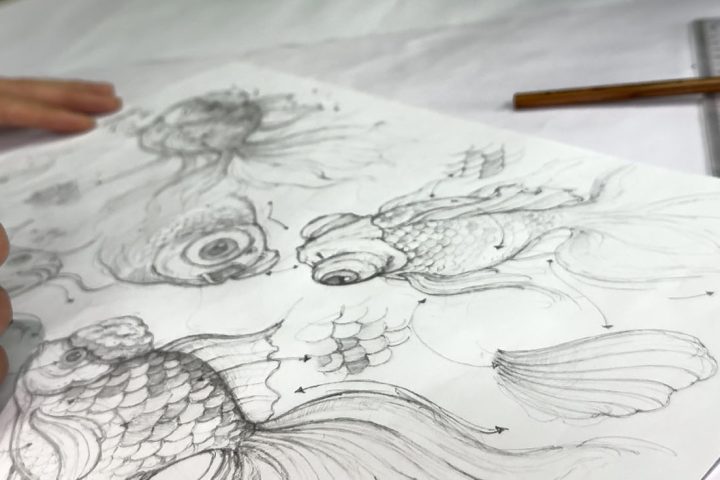
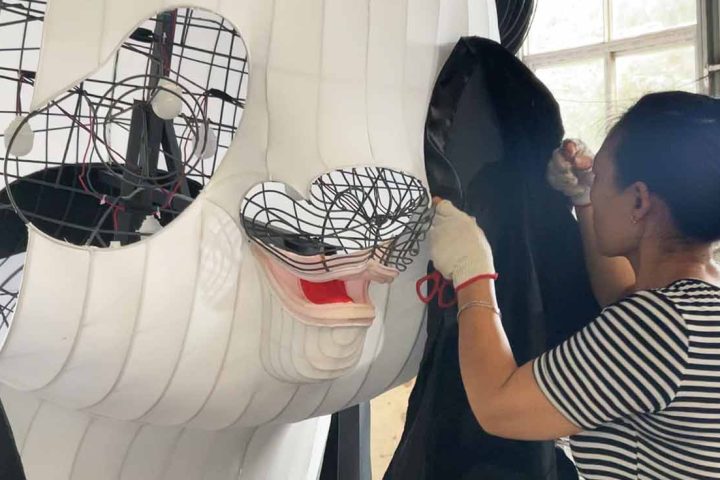
3. Our Featured Services
Integrated Design: We combine traditional lantern craftsmanship with modern design concepts to create lantern works that are both traditional and modern. For example, we combine traditional palace lantern shapes with modern lighting technology to design decorative lanterns that are both classical and stylish.
Interactive Experience: We have developed a series of interactive lantern works that can interact with people through sensor technology and programming, adding to the fun and engagement.
Environmental Sustainability: We focus on using environmentally friendly materials and have developed a reusable modular lantern system to reduce resource waste.
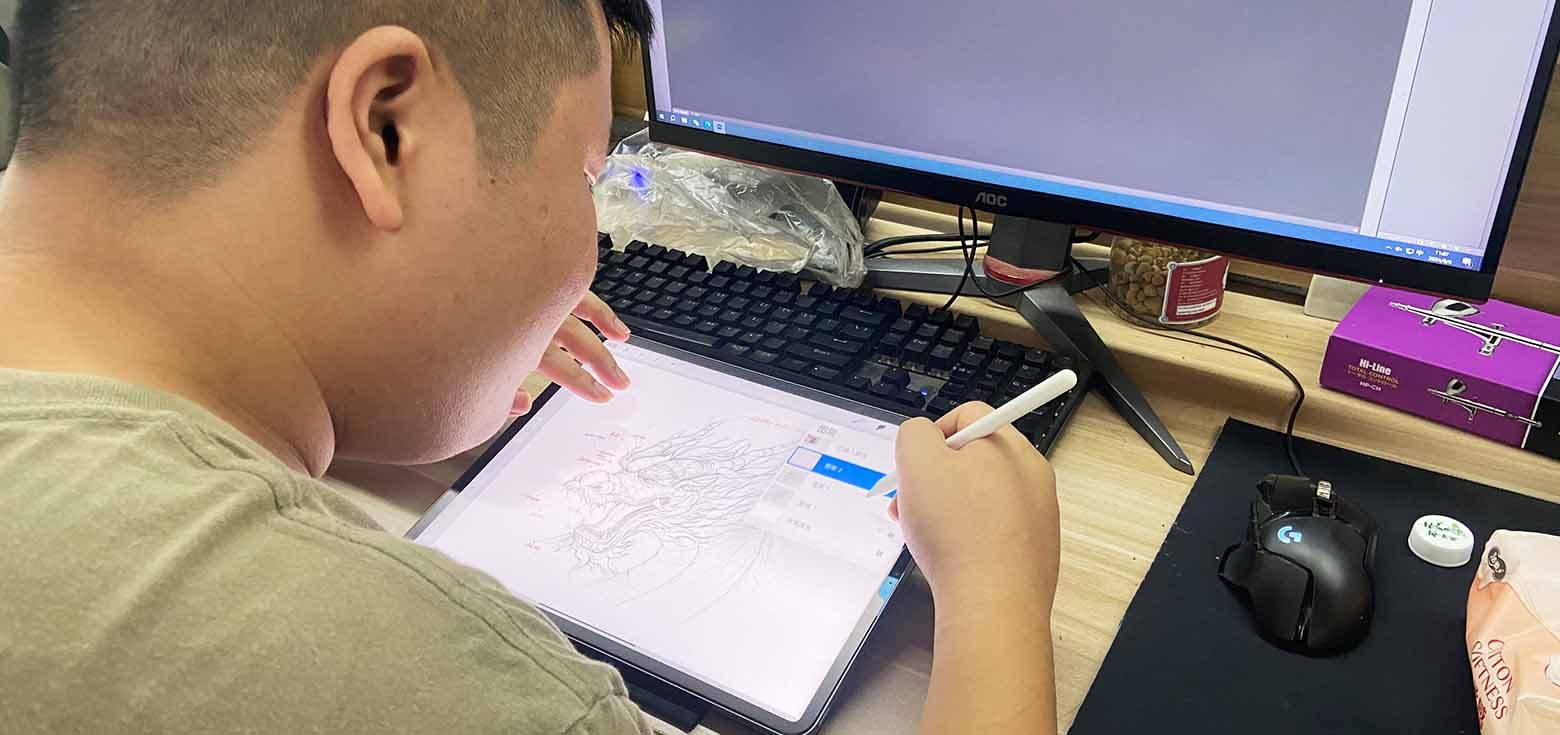
If you’re still on the fence about choosing a professional lantern factory, please read our article, “The Value of High-End Customization“
Conclusion
Chinese lanterns have come from a long history, carrying the cultural memory and aesthetic pursuits of the Chinese nation. Today, they are showcasing their unique charm in a richer and more colorful way, becoming an important cultural link that connects tradition with modernity, and China with the world.
As inheritors and innovators of Chinese lantern culture, ForestPaintingLantern will continue to delve into the essence of traditional lantern art and constantly explore the connections between lanterns and modern technology and life. We aim to provide more diverse and high-quality lantern customization services, allowing the art of Chinese lanterns to shine more brilliantly around the world.
We welcome you to contact ForestPaintingLantern. With no limitations on theme or scene, let us work together to create a unique lantern piece for you and add more light and beauty to the world.
Chinese Lanterns FAQs
Have more questions? Feel free to contact us.
What are the core steps in making a traditional Chinese lantern?
The creation of a Chinese lantern involves several key stages: designing the blueprint, building the skeleton (using materials like bamboo strips or wire), applying the cover (with silk, paper, or fabric), installing the internal light source, and finally, adding detailed decorations and final touches. Each step is a test of a craftsman’s skill, making every lantern a unique work of art.
What's the fundamental difference between traditional Chinese lanterns and modern light shows?
The core of Chinese lanterns lies in their handicraft and cultural substance. Each lantern tells a story, carrying historical narratives or auspicious meanings. Modern light shows, in contrast, focus on technological innovation and visual spectacle, using computer programming and multimedia to create impressive sensory experiences. Lanterns are a vessel for tradition and emotion, while light shows are a display of modern technology.
What's the significance of color and light in Chinese lanterns?
The colors and lighting of Chinese lanterns are rich with cultural meaning. Red symbolizes joy and good fortune, yellow represents dignity and royalty, and gold adds a sense of grandeur. The lighting, created by the intensity of internal light sources and the transparency of the materials, creates a sense of depth and layering, making the lantern look dynamic and vibrant at night, rather than just being a simple source of light.
What are the challenges and opportunities for Chinese lantern culture in modern society?
Chinese lantern culture faces significant challenges, mainly the disruption of traditional craftsmanship and market homogenization, as fewer young people are learning the ancient skills. However, there are also new opportunities: technology (like 3D printing and LED lights) is breathing new life into the art form; cross-industry collaborations (with tourism and creative products) are expanding its commercial reach; and growing cultural appreciation is making lanterns a powerful tool for sharing Chinese culture with the world.
What are some little-known facts about the themes and designs of Chinese lanterns?
The themes and designs of Chinese lanterns are far richer than they appear, holding many fascinating, little-known secrets:
Puns and Symbolism: Many lantern designs use Chinese homophones to convey good wishes. For example, a carp lantern symbolizes “surplus year after year” (nian nian you yu), as “fish” (yu) is a homophone for “surplus” (yu). A bat lantern symbolizes “good fortune” (fu), as “bat” (fu) is a homophone for “fortune” (fu).
Cultural Coded Messages: Beyond zodiac animals and mythical figures, lanterns often draw from historical stories and classic poems. A seemingly simple lotus lantern might be a reference to Zhou Dunyi’s classic essay, symbolizing purity. A group of lanterns depicting pavilions might be a recreation of the famous painting Along the River During the Qingming Festival.
The Secret of Dynamic Lanterns: Some seemingly static lanterns have a hidden mechanism. Many traditional revolving lanterns (zou ma deng) use the principle of rising hot air to spin an internal paper-cut carousel, creating lively scenes. This blend of physics and art is a testament to ancient wisdom.
How can I make a simple China lantern at home?
If you want to experience the fun of making a lantern yourself, you can try this simple “Hexagonal Palace Lantern” tutorial:
Materials Needed: Thin bamboo strips or disposable chopsticks, red paper, scissors, glue, a small battery-powered LED light, red string, and a tassel.
Step-by-step instructions:
Build the Frame: Cut six bamboo strips to the same length and glue or tie them into a hexagonal base. Then, cut six longer strips, attach one end of each to a corner of the base, and bring the other ends together at the top to form an inverted cone shape.
Attach the Panels: Cut six red rectangular pieces of paper to fit the sides of the frame. Draw or cut out your desired patterns, such as paper-cut flowers or birds. Then, glue the paper panels onto the six sides of the frame.
Install the Light: Secure the small LED light at the center of the base inside the frame, ensuring it illuminates the entire lantern evenly.
Add Decorations: Tie a tassel to the bottom of the lantern and a red string to the top for hanging. You can also glue some golden glitter or decorative strips along the edges for a more refined look.





